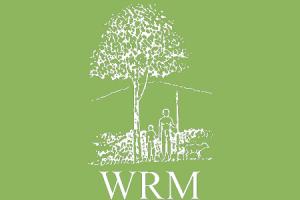The situation is much the same in many southern countries: people and supporting organizations are trying to protect the forests against government-corporate alliances. Well known causes of biodiversity loss such as industrial logging, fossil fuel exploration and exploitation, mining, hydroelectric dams, industrial monocrops, road opening and shrimp farming continue being promoted for the almost exclusive benefit of large corporations.
Large-Scale Tree Plantations
Industrial tree plantations are large-scale, intensively managed, even-aged monocultures, involving vast areas of fertile land under the control of plantation companies. Management of plantations involves the use of huge amounts of water as well as agrochemicals—which harm humans, and plants and animals in the plantations and surrounding areas.
Other information
7 March 2006
Eucalyptus, pine, acacia, gmelina, teak, oil palm plantations have become a major social and environmental problem. From a biodiversity perspective they eliminate most local plants and provide almost no food to wildlife. Some plantation species become invasive, thus encroaching on natural ecosystems. In spite of this, they continue to be promoted, particularly in the South, for the production of cheap raw material mainly for the pulp/paper and palm oil industries.
Other information
7 March 2006
International Women’s Day had an unusual celebration in Brazil. At dawn on 8 March, close on 2 thousand women farmers linked to the Via Campesina organization took lightening action at the facilities of the Aracruz Celulose pulp mill company in the Municipality of Barra do Ribeiro near Porto Alegre. The Barba Negra establishment is the main production unit for eucalyptus and pine seedlings to supply their Guaiba factory. It even has a laboratory for cloning seedlings.
Other information
7 March 2006
This month, WRM publishes a new report titled "The death of the forest: A report on Wuzhishan's and Green Rich's tree plantation activities in Cambodia". The report records the impact of two companies' tree plantations on local communities and their livelihoods. For security reasons, the researchers of the report wish to remain anonymous.
2005 was another bad year for democracy in Cambodia. Prime Minister Hun Sen used defamation law suits to arrest or intimidate members of the political opposition, media, trade unions and NGOs.
Other information
7 March 2006
The Indio Maiz Biological Reserve is located in the southeast region of Nicaragua, covering an area of 3,180 km². It is called after two rivers, the Indio and the Maiz. It is one of the most important biosphere reserves in the country and contains a tropical rainforest, wetlands and lagoons hosting diverse fauna: jaguars, harpy eagles, green macaws, manatees, sawfish and crocodiles. In the forest you will find cedar, mahogany, almond, medlar, manu and maria trees, among others.
Other information
7 March 2006
Papua New Guinea has a communal land system that has allowed most rural communities to make a decent living from the free and easy access to land, clean water and the abundance of natural resources. However, the introduction of cash crop plantations undermines their customary systems and structures bringing up negative environmental and social impacts.
Other information
7 March 2006
For over a decade a network of interests has been pushing industrial tree plantations in Laos. The key organisation is the Asian Development Bank. In 1993, the Lao government approved a Tropical Forest Action Plan (TFAP), carried out with funding from the ADB and the World Bank, among others. The TFAP recommended logging the forests and establishing industrial tree plantations on degraded forest land.
Other information
7 March 2006
Two large national plantation companies (FYMNSA and COFUSA), a Finnish company (Botnia-UPM/Kymmene) and a Spanish company (Ence-Eufores), have received the Forest Stewardship Council (FSC) certificate. This certificate enables the companies to assure that their “forests” (of pine and eucalyptus!) are managed in an environmentally responsible, socially beneficial and economically viable manner. At least this is what the FSC mandate affirms. However, a recent study carried out in Uruguay shows the exact opposite.
Other information
7 March 2006
The increasing use of biotechnology in the forestry sector has led to the spread of genetically engineered tree planting in at least thirty-five countries. Though --according to FAO-- most research is confined to the laboratories, many millions of GE trees have already been released in open field trials in China, North America, Australia, Europe, and India, and to a lesser extent, South America and Africa.
Other information
7 March 2006
Black-necked swans used to have their habitat in the Carlos Andwandter Nature Sanctuary on the Cruces River, a Ramsar site located in the northern zone of the city of Valdivia in the Tenth Region. The black-necked swan (Cygnus melancoryphus) is a migratory bird native of South America. Its landscapes are the wetlands of the south of Brazil, Uruguay, nearly all Argentina and Chile from the Fourth to the Tenth Region. It feeds on plants and in the Cruces River on a waterweed, the luchecillo (Egeria densa).
Other information
7 March 2006
Black-necked swans used to have their habitat in the Carlos Andwandter Nature Sanctuary on the Cruces River, a Ramsar site located in the northern zone of the city of Valdivia in the Tenth Region. The black-necked swan (Cygnus melancoryphus) is a migratory bird native of South America. Its landscapes are the wetlands of the south of Brazil, Uruguay, nearly all Argentina and Chile from the Fourth to the Tenth Region. It feeds on plants and in the Cruces River on a waterweed, the luchecillo (Egeria densa).
Bulletin articles
7 March 2006
Industrial logging is one of the main direct causes of forest biodiversity loss. Many organizations and governments have focused on illegal logging and less so on destructive legal logging (see WRM Bulletin Nº 98). In this respect, a recent report (“Legal Forest Destruction. The Wide Gap Between Legality and Sustainability”) provides a broader perspective by looking at the Dutch timber trade, its focus on legality and the impact of legal logging on forests.
